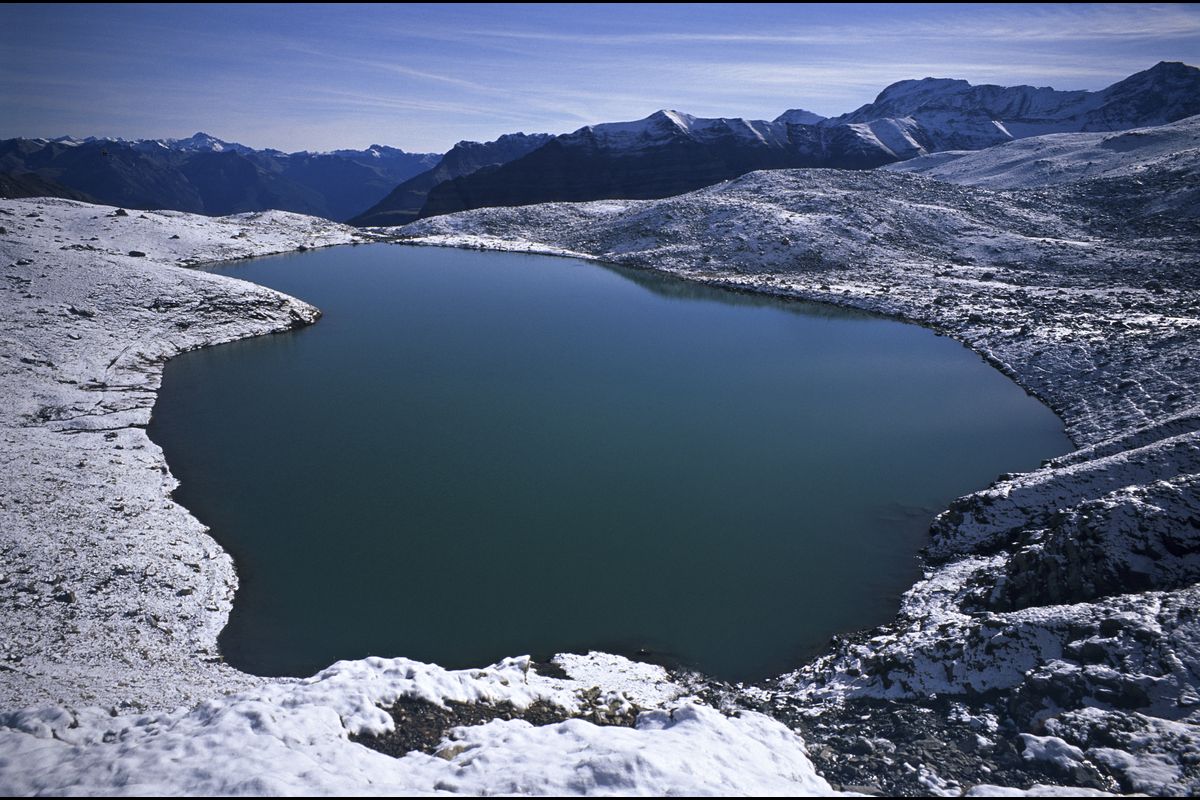
Vallon Lake
This beautiful large scale itinerary leads from the bottom of the valley to the rocky cirque which reaches up to 3000 m. Minerals are omnipresent and the surrounding summits hide our view of the clouds which can arrive from the South: Be careful of the weather, because you can be surprised by storms up there-haut, the descent will be eventful!
Samy Jendoubi, Park ranger at Valbonnais
Description
It is best to leave your vehicle beside the Chantelouve church in the hamlet of Bosses. Cross the Malsanne on a wooden walkway, then, on a track traced across a vast shale slope, reach the place which is a timber depot... From there, continue on the forest trail, cross the gorge of the Malsanne on Moulin bridge and follow diagonally right on the path going through a little wood coming out into a vast valley scattered with boulders. At the bottom of the valley, going into the heart of the National Park cross follow a passage between, the steep rocky slabs then the track leads to the pastoral cabin (where there is water). The track continues with several bends through alpine lawns at altitude... It follows a wonderful waterfall originating in Vallon lake. The landscape becomes very mineral when you arrive at the first glacial polishes. Return using the same itinerary.
- Departure : Les Bosses
- Towns crossed : Chantelouve
19 points of interest
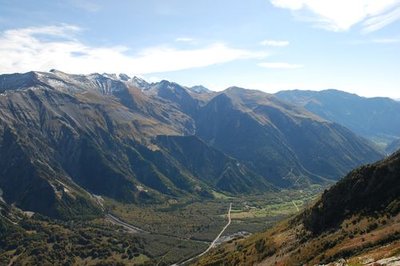
Forêt d'aulnes blanc - Samy Jendoubi - PNE  Fauna
FaunaAlder Forest
From the track, looking towards the Ornon mountain pass, in the North, you can observe the most vast Alder Forest (a forest of white Alders) in France, It is an Alder Forest of national interest one of the registered sites in the Natura 2000 European network.

Dorine à feuilles alternes - Olivier Warluzelle - PNE  Flora
FloraForest Flora
The oozing banks are the place where the Alternative Leaved Golden Saxifrage lives, a plant with rounded yellow leaves which grows from March onwards. In the shade, on old rotting wood, Bugmoss flourishes: A moss which puts out a minuscule bright green bag enclosing spores (« seeds ») from the beginning of Spring, the rest of the plant consists of almost invisible filaments.
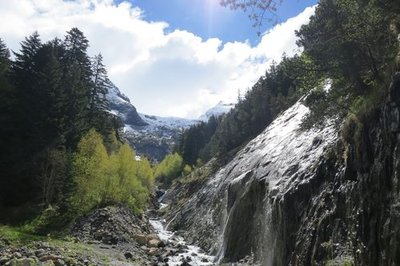
Ruissellement de tuf - Jonathan Le Roi - PNE  Geology and geography
Geology and geographyTuff waterfall
From the Moulin bridge, an enormous waterfall seems to be mummified: the water that falls slowly deposits the dissolved minerals that it contains. The rock in place is covered with tuff, a porous yellow rock that traps vegetable debris and minerals that come to rest over time.
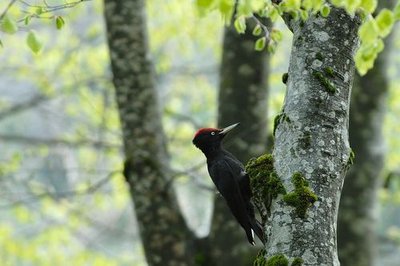
Pic noir - Mireille Coulon - PNE  Fauna
FaunaForest Fauna
The Adversets woods shelter fauna which is rich and diversified: wild boar, deer, which is the favourite prey of lynx, very discreet but present around the Ornon mountain pass since 1995. If the cry of the Black Woodpecker can be heard up to a 1 km away, the call of the Boreal Owl or the Eurasian Pygmy Owl as night falls is very discreet. These species are linked because these owls sometimes use holes made in the trees by the woodpeckers.
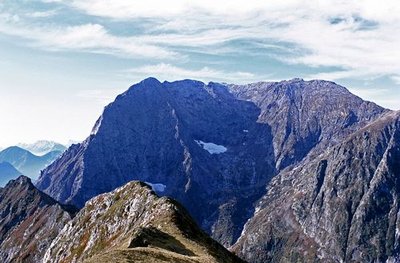
Glacier du Grand Armet - Daniel Fougeray - PNE  Geology and geography
Geology and geographyThe Grand Armet
In the descent to Vallon Lake towards Chantelouve, you will be without a doubt impressed by this massif at a height of more than 1500m, striped with abrupt vallies and avalanche corridors, facing you. Armet massif separates the valley of Malsanne from Roizonne, and shelters the most Western glacier in the Alps. At the foot of the Grand Armet (2792m), beside the hamlet of Chalp, a geological anomaly generated curiosity among geologists in the 1980s and enabled them to imagine a new scenario concerning the formation of the Alps. The theory of the “tilted blocks”.
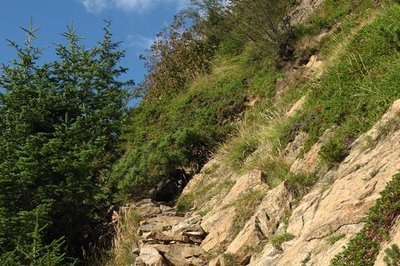
La dolomie, au passage des dalles - Samy Jendoubi - PNE  Geology and geography
Geology and geographyDolomie
Before the creation of the Alps, the sea invaded our continent (-245 à -65 million years). During a tropical period, the evaporation of the sea which was not very deep in places, left space for brown-yellow rock, the dolomite, that you can see on the steep path of the lake towards an altitude of 1700 m, passing the slabs.
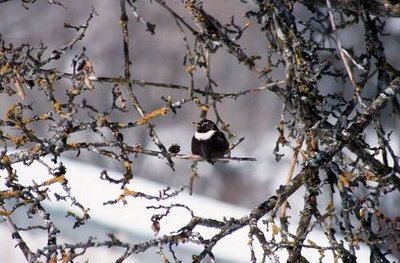
Merle à plastron - Pierre Dumas - PNE  Fauna
FaunaRing Ouzel
The tallest trees at altitude welcome many Ring Ouzels. They are often visible when they are singing, perched at the ends of branches. You will easily recognize them by the white big that decorates the chest of the males.
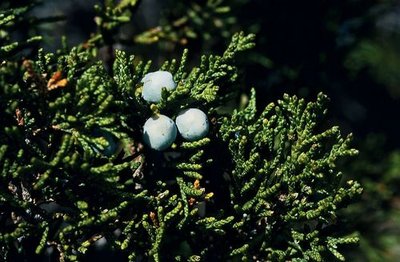
Genévrier sabine - Bernard Nicollet - PNE  Flora
FloraSavin Juniper
Savin Juniper, is a spreading bush, dark green and mat, it is not covered with spines but smooth fleshy scales. Do not pick the berries, even if they look like those of common juniper, these are toxic and can provoke hemorrhaging.
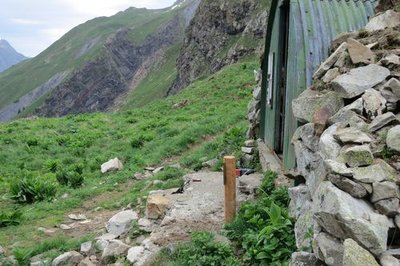
La cabane du Pré de la Vache - Jonathan Le Roi - PNE  Pastoralism
PastoralismMountain Cabin
Above an altitude of 1 800 meters the alpine grassland is the domain of the chamois and the marmot. In summer, it makes up vast pastures for the flocks from the Midi grazing during the summer. The cabin at Pré de la Vache could be your shelter in case of bad weather, unless it is occupied by the shepherd (for a part of August).
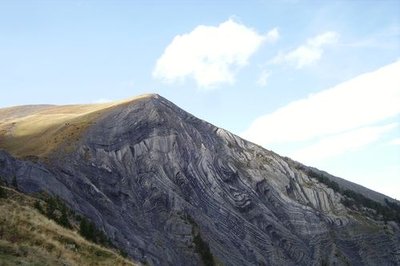
Plissements calcaires du ravin de l'Argentière - Bernard Nicollet - PNE  Geology and geography
Geology and geographyFolds in the Ravine at Argentière
Witnesses to upheaval in the Alps, the spectacular folds in the sedimentary layers (marly limestone) in the left bank of the ravine at Argentière are 200 million years old. These layers were first horizontally positioned under the sea which covered the region at that time which then progressively receded. The continental plates were then brought into to contact with each other during the surrection of the Alps, deforming all the rocks.
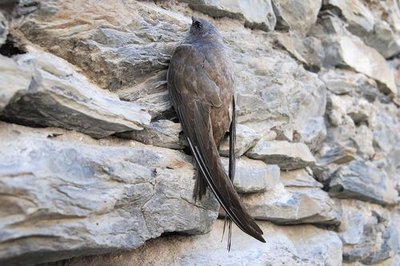
Martinet à ventre blanc - Denis Fiat - PNE  Fauna
FaunaAlpine Swift and Common House Martins
The end of the summer is the moment when numerous Alpine Swifts and Common House Martins gather. Before leaving the Alps for warmer countries these birds gather together and stuff themselves with insects in the warm air currents rising from the slopes at the end of the day. Once their batteries have been recharged they can begin their migration.
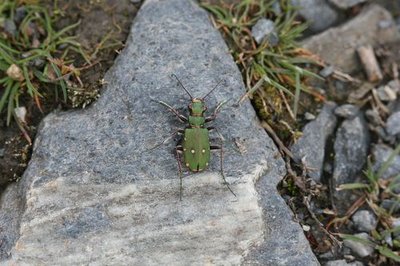
Cicindèle champêtre - Bernard Nicollet - PNE  Fauna
FaunaGreen Tiger Beetle
This beautiful green insect spotted with white is in fact a formidable hunter, running across the sandy paths, in the heat of the sun, after its prey. It finds them thanks to its big eyes, follows them on the ground or in the air and breaks them in to pieces with its powerful jaws before eating them.
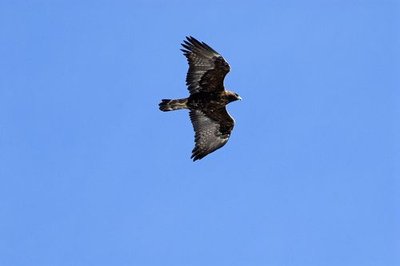
Aigle royal en vol - Mireille Coulon - PNE  Fauna
FaunaBig gliders
The Royal Eagle roams the slopes looking for an imprudent marmot to catch for its meal. It is sometimes followed by wild vultures that move in groups in the currents of rising air les courants ascendants or gliding down the long reliefs searching for the cadavers of animals. An enormous black triangular silhouette sometimes accompanies them: the Monk Vulture.
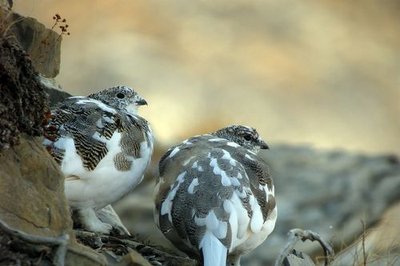
Lagopèdes alpins - Damien Combrisson - PNE  Fauna
FaunaRock Ptarmigan
The Alpine level is the habitat of a discreet bird, changing its feathering to better camouflage itself: The Rock Ptarmigan. Repatriated across the entire continent during the Quaternary glaciations, the species has now gone back to the places offering it the climatic conditions that it prefers... This fragile population is monitored by the National Park within a program concerning the whole Alpine arc: l'OGM. It is not about « doping » wild animals but following their reproduction over the years for the Observatory of Mountain Galliformes.
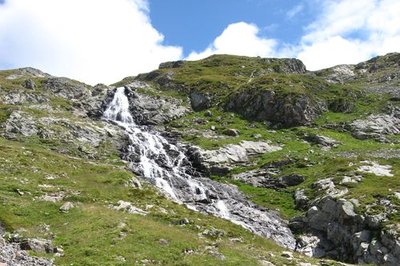
Cascade aperçue du sentier menant au Lac du Vallon - Samy Jendoubi - PNE  Water
WaterWaterfalls
Present at several times between -1,8 million and -18 000 years, the glaciers have marked the passage of polished rocks in the form of giant flights of steps where the torrent falls in waterfalls.
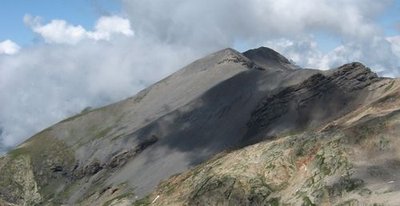
Les barres de spilites au col du Rochail - Samy Jendoubi - PNE  Geology and geography
Geology and geographySpilite bars
During periods of intense tectonic activity (the movements of continental plates), outcrops of larva are produced on contact with the water... Dark Spilite cliffs are the result of this; you can see them on the right bank of the Combe Chave and under the Rochail mountain pass.
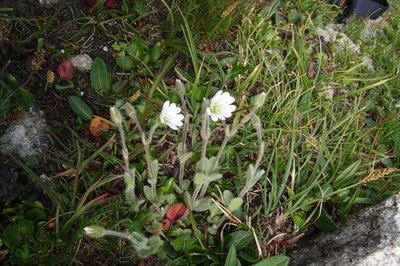
Céraistes des Alpes - Bernard Nicollet - PNE  Flora
FloraAlpine Chickweed
This little white plant, with leaves covered in long hairs, only lives on polishes glaciers. Since it cannot tolerate manure, contact with the flocks of sheep can be fatal to it.: this is why grazing is not advised the lake at Vallon.
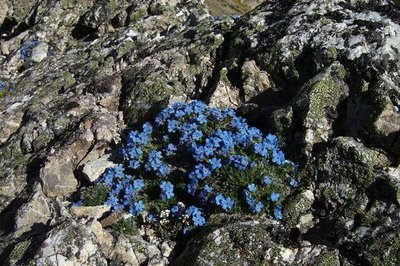
Eritriche nain - Bernard Nicollet - PNE  Flora
FloraRock flowers
On the black cliffs, you can easily see any point of colour. This is the case with the Forget-me-Not whose bright blue flours with a yellow heart attract the insects and the Artemisia eriantha, the biggest of the Artemisia génépis, covered with hairs and very aromatic which is built for the fight against the cold and drought. Be careful in the heart of the Park or not, these plants are protected, so observe them, but let them survive in this hostile place.
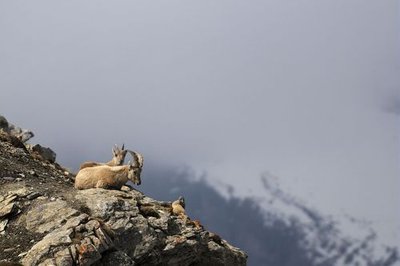
Bouquetins mâle et femelle - Mireille Coulin - PNE  Fauna
FaunaIbex
Having disappeared in the middle of the 19th century. , the Ibex was reintroduced into the Ecrins National Park in the Valbonnais 1989 and 1990. The cliffs that surround the Vallon lake, are an area of reproduction and rearing of young Ibex, welcoming small groups in the summer season. If you see them, do not hesitate to communicate your observations to the Park House, especially if they have coloured loops in their ears.
Altimetric profile
Sensitive areas
Alpine ibex
- Impacted practices:
- Aerial, , Land, Vertical
- Sensitivity periods:
- JunJulAugSep
- Contact:
- Parc National des Écrins
Julien Charron
julien.charron@ecrins-parcnational.fr
Short-toed snake eagle
- Impacted practices:
- Aerial,
- Sensitivity periods:
- MarAprMayJunJulAugSep
- Contact:
- Parc National des Écrins
Julien Charron
julien.charron@ecrins-parcnational.fr
Recommandations
There is the possibility of joining the trail (although it is difficult) by car but there is sometimes a problem to find parking (at least a 1h of walk).
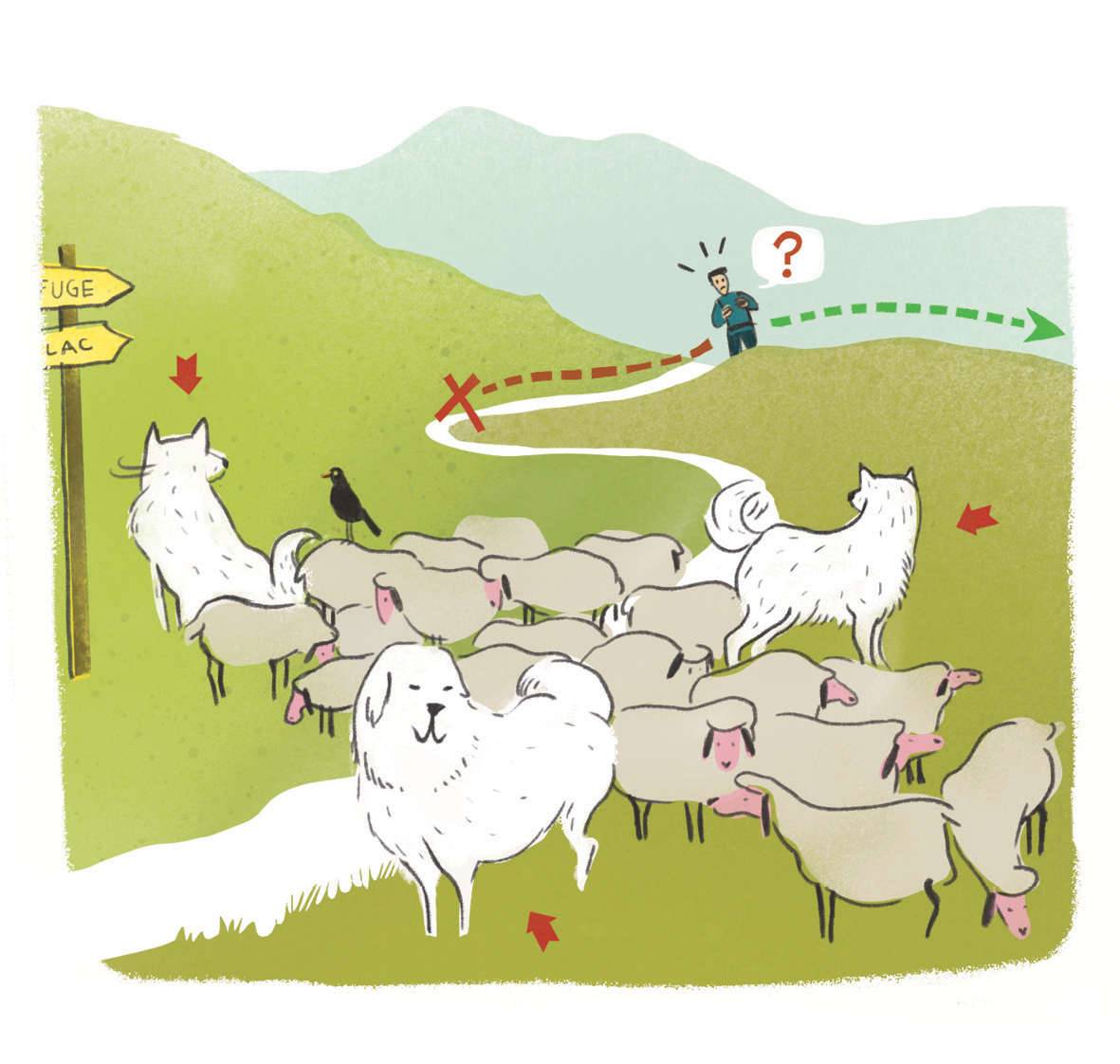 In mountain pastures, protection dogs are there to protect the herds from predators (wolves, etc.).
In mountain pastures, protection dogs are there to protect the herds from predators (wolves, etc.).
When I hike I adapt my behavior by going around the herd and pausing for the dog to identify me.
Find out more about the actions to adopt with the article "Protection dogs: a context and actions to adopt".
Tell us about your meeting by answering this survey.
Information desks
Maison du Parc du Valbonnais
Place du Docteur Eyraud, 38740 Entraigues
Reception, information, temporary exhibition room, reading room and video-projection on demand. Shop: products and works of the Park. Free admission. All animations of the Park are free unless otherwise stated.
Access and parking
D526 Entraigues Col d'Ornon.
Source

Report a problem or an error
If you have found an error on this page or if you have noticed any problems during your hike, please report them to us here:


